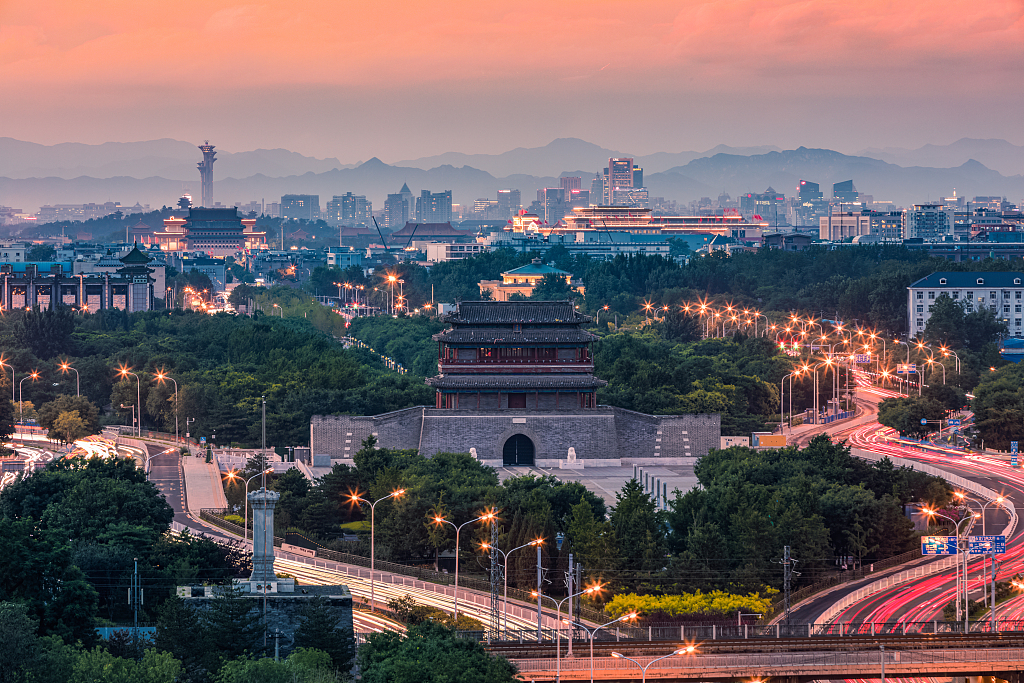

The central axis of Beijing, a north-south line of cultural relics and historical buildings in an old quarter of China's capital, is in the process of application for World Heritage status. Around 43 years ago, the Historic Centre of Rome – which includes some of the major monuments of the Italian capital – was inscribed as a World Heritage site by UNESCO. The two zones, blessed with many historical sites, bear rich deposits of culture and showcase the development progress of the two civilizations. Today, they both still shine with grand scale and completeness.
Central Axis of Beijing
The 7.8-kilometer-long Beijing Central Axis, which stretches from the Drum Tower and Bell Tower in the north to the Yongding Gate in the south, has witnessed China's history since the 13th century.
There are seven World Heritage sites in Beijing, with three of them situated along the central axis: the Forbidden City, the Temple of Heaven and the Jinghang Grand Canal. The ancient axis, also called the "backbone" of Beijing, is in the process of consideration for World Heritage status, reflecting both the concepts of ancient Chinese urban construction and the most important symbols of Chinese culture.
The central axis consists of 14 sites including the Yongding Gate, the former front gate of Beijing's old city wall guarding the outskirts of the capital; the Temple of Heaven, a site that emperors of the Ming (1368-1644) and Qing (1644-1911) dynasties used to worship the heavens and offer prayers for a bountiful harvest; the Forbidden City, the royal residence of the emperors of the Ming and Qing dynasties; Wanning Bridge, a single-arch white marble bridge built in the Yuan Dynasty (1279–1368); and the Drum and Bell Towers, once responsible for the city's timekeeping.
In January 2023, the Beijing Municipal Cultural Heritage Bureau published a plan spanning from 2022 to 2035, laying out a protection plan for the central axis, which covers a heritage zone of about 5.9 square kilometers and a buffer zone of about 45.4 square kilometers.